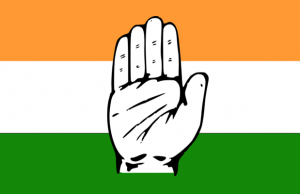THE BATTLE BEGINS FOR VHP EMPIRE

Unsurprisingly, we are now witnessing an open feud for control of the Vishwa Hindu Parishad (VHP) between its leaders after the demise of Ashok Singhal, the erstwhile working president. An internal battle between three major factions has begun and it is bound to get ugly. Praveen Togadia, who is currently the International Working President of the VHP, Uma Bharti, a Union Minister and Vinay Katiyar, the founder president of Bajrang Dal, are all trying to claim and inherit Singhal’s legacy. In addition, Singhal has left behind assets which, as per an estimate, are worth thousands of crores of rupees, spreading all across the country and abroad.
The VHP runs 92 hospitals, 128 dispensaries, 54 mobile dispensaries, 12 medical centers, 46 medicine collection centers, several ambulances and hundreds of other medical projects across the country. It also runs 61 computer centers, 18 village industry centers, 104 cow shelters, 2 animal husbandries, 2 mechanical centers, 88 sewing centers, and around 300 self-help groups in different states. Moreover, 593 primary schools, 143 secondary schools, 44 senior secondary schools, 14 residential schools, a night school, 105 hostels for boys and girls, 46 coaching centers, 129 libraries, among other centres of learning function under the aegis of the VHP.
In the name of preserving traditional Hindu rituals or ‘Sanskars’ pertaining to birth, marriage and death, the VHP possesses a huge network of immovable assets. Birth Sanskars are conducted in orphanages. Mass or group weddings are arranged for those couples that cannot afford lavish wedding ceremonies. Those who are unable to perform last rites due to financial constraints are also helped. The VHP has to possess such paraphernalia to fulfill its ‘responsibility’. Therefore, it has a vast network of 45 orphanages, 29 marriage bureaus, 13 legal help centers, 22 women rescue centers, 3 working women hostels and 159 other projects to achieve this purpose.
The VHP also takes care of 455 tree plantation and 111 drinking water projects across the country too. It has a hand in the construction of 298 temples all over the country at the moment. However, the long pending Ram Janmabhommi temple project, for which it has collected a whopping sum, is ye to be constructed. The organisation also has in hand 54 rural development projects with around 1500 other small and medium size social projects. It has regular publications in Hindi, Gujarati, Marathi, Bengali, Kannada, Malayalam, Telugu, Tamil, and Oriya and brings out several books and calendars every year.
Suffice to say, the VHP also generates huge resources—human, financial, and physical—through its youth wings Bajrang Dal and Durga Vahini. It has drawn boundaries for its organisational zones that are called Prants and their activities are monitored through its 12 main centres located in Delhi, Meerut, Jaipur, Lucknow, Patna, Kolkata, Guwahati, Karnavati, Bhopal, Mumbai, Bangalore and Chennai. It also runs dozens of weekly religious congregations and conducts programmes such as Mantra Jap, Durga Saptashati Path, Maha Aarti, Durga Chalisa Path apart from medical camps, Yoga camps and vocational guidance camps. Its Matru Shakti cell, Cow Protection Department, Centre for cow science and research, Vyavhar Shivir, Pourohitya Prashikshan, Dharm Prasar, and Dharmacharya Sampark Karyakram have grown their roots in previous decades.
The VHP also has a special focus on the publication of several original Sanskrit works through Bharat Sanskrit Parishad. During my visits abroad, I have seen how the VHP branches in various countries have been converted into cash cows for its headquarters in India. Its presence in USA, Canada, United Kingdom, Germany, Netherland, Norway, Sweden, Thailand, Singapore, Indonesia and Australia, among others, provides the VHP with financial assistance and a strong logistics base across the world. A metallurgical engineer, Ashok Singhal, had conceptualised the international branding for VHP, recruited supporters and established offices abroad. As a result, the VHP has received massive contributions from outside India for its campaigns.
I still remember how in April 1990, a deputy director of income tax (exemptions) posted in the national capital put his seal on a notice and four summons, asking VHP leaders to appear before the tax authorities. These VHP leaders were asked to furnish income tax returns and provide detailed accounts. However, the then National Front government, which had the support of the BJP, quashed the notice and summons within 24 hours. In the Rajya Sabha, the then Finance Minister Madhu Dandavate stated that the notice had been issued under Section 139(2) of the Income Tax Act, which was soon repealed. He added that the official who had issued the notice had been transferred to Tamil Nadu. Dandavate, however, failed to answer some disturbing questions. Why were the summons issued under Section 131 to VHP office-bearers Ashok Singhal, VH Dalmia, Mahant Paramhans, and Mahant Nritya Gopal Das quashed? Summons under Section 131 can only be invalidated by a court or if the affected party appeals to the director, income tax (exemptions). In the case of an appeal, the assessing officer’s explanation is sought. However, neither did the VHP issue an appeal nor was the assessing officer asked to explain.
Moving on to February 1999, a story had appeared through the Indian media about how the corridors of power in Delhi had mysteriously suppressed an Income Tax Department file, which was looking into a Rs. 300 crore fund that the VHP had allegedly received from NRIs for the Ram temple fund. Ram Vilas Paswan, who now is a blue eyed associate of the BJP, had demanded a CBI probe in the Parliament on March 13, 2003, of the Rs. 8,000 crores collected by the VHP for its Ram Janmabhoomi temple.
Recently, in July 2015, the Akhil Bharatiya Hindu Mahasabha had sent a letter to Prime Minister Narendra Modi and Rashtriya Swayamsevak Sangh Chief Mohan Bhagwat, accusing the VHP and its associated units of pocketing more than Rs 1,400 crore in cash and ‘‘quintals of gold bricks’’, which were collected from across the world as donations for the construction of the Ram temple in Ayodhya.
Even now if we now cannot understand the strong urge that Togadia, Uma Bharti, and Katiyar possess “to join all the noble souls in the great yajna for realising the power of unity and serve the motherland”, only God can help us.




You must be logged in to post a comment Login